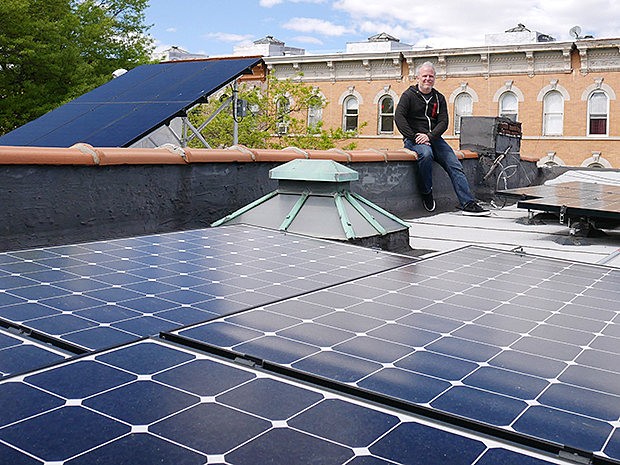The thermal energy of a system is the total amount of kinetic and potential energy that is associated with the random motion of the particles in the system.
In a system, the thermal energy is the sum of the kinetic energies of all the particles in the system. The SI unit for thermal energy is the joule. In classical thermodynamics, the thermal energy of a system is usually denoted by U or H.

Credit: brainly.com
What is the Thermal Energy of a System?
In physics, thermal energy is the kinetic energy of random motion of particles in a substance. Thermal energy arises from two atomic-level processes: translational motion and rotational motion. In solids and liquids, these motions are due to the vibration of atoms and molecules; in gases, they are due to the translation (i.e., movement) of molecules.
The SI unit of measurement for thermal energy is the joule (J), although other units such as the calorie (cal) and electronvolt (eV) are sometimes used in specific contexts.
At the macroscopic level, thermal energy manifests as both heat flow and temperature change. Heat flow is simply transfer of thermal energy from one place to another due to a temperature gradient, while temperature change represents a redistribution of thermal energy within a system due to its thermodynamic properties.
Both effects can be observed in any material system including living organisms, but it is important to note that heat flow does not necessarily imply temperature change. For example, if two objects at different temperatures are brought into contact with each other, there will be heat flow from the hotter object to the cooler one until their temperatures become equal; however, if both objects have the same initial temperature then no net heat flow will occur despite there still being some underlying random molecular motion.
What is Thermal Energy Apex?
Thermal energy is the internal energy of a system in thermodynamic equilibrium due to its temperature. The thermal energy of a system is the total kinetic and potential energies of the particles that make up the system. The SI unit of thermal energy is the joule.
Is Thermal Energy the of the Particles in a System?
Thermal energy is the energy of the particles in a system. The amount of thermal energy in a system depends on the temperature of the system. The higher the temperature, the more thermal energy the particles have.
What is the Answer to Thermal Energy?
The answer to thermal energy is quite simple: it is the kinetic energy of molecules in a system. This means that, on a molecular level, thermal energy is the sum of all the kinetic energies of the molecules in a system.
In order for there to be thermal energy, there must be motion.
This is because only moving objects have kinetic energy. So, if you want to increase the thermal energy of a system, you can do so by increasing the average kinetic energy of its molecules. One way to do this is to increase the temperature of the system.
This will cause more collisions between molecules, which will lead to an increase in their kinetic energies.
Another way to increase the thermal energy of a system is to add more molecules to it. This also increases the number of collisions between molecules and thus their total kinetic energies.
Finally, you can also decrease the size of a system while keeping its temperature constant.
What is thermal energy in EVS?
What is the Thermal Energy of a System Brainly
The thermal energy of a system is the total amount of energy that the system has due to its temperature. It is the sum of the kinetic and potential energies of all the particles in the system. The SI unit for thermal energy is the joule.
What is Thermodynamics Apex
Thermodynamics Apex is a tool that helps engineers and scientists understand the behavior of materials at extremely high temperatures. It can be used to study how materials change under conditions of extreme heat and pressure, such as those found in nuclear reactors or during aerospace propulsion. Thermodynamics Apex can also be used to predict the properties of new materials that have not yet been created.
What Does the Latent Heat of Fusion Represent
The latent heat of fusion is the amount of energy required to change a substance from a solid to a liquid, or vice versa. The value is specific to each substance and is usually expressed in joules per kilogram (J/kg). For example, the latent heat of fusion of water is 333.55 J/kg.
Latent heat can be used to calculate the enthalpy of a reaction, which is the amount of heat released or absorbed during a chemical reaction. Enthalpy is important in determining the stability of a reaction and whether it will proceed as written.
The latent heat of fusion is also used in many practical applications, such as ice cream making and welding.
When welding metals together, the metal must first be heated until it reaches its melting point. This requires a large amount of energy, which can be supplied by the latent heat of fusion.
What is Convection Apex
Apex is a cloud-based, data-driven platform that enables businesses to intelligently connect with their customers. Apex provides real-time customer insights, personalized engagement, and powerful automation to help businesses drive growth.
Conclusion
The Thermal Energy of a system is the total amount of energy in the system that is available for thermal transfer. The SI unit for thermal energy is the joule.






Leave a Reply